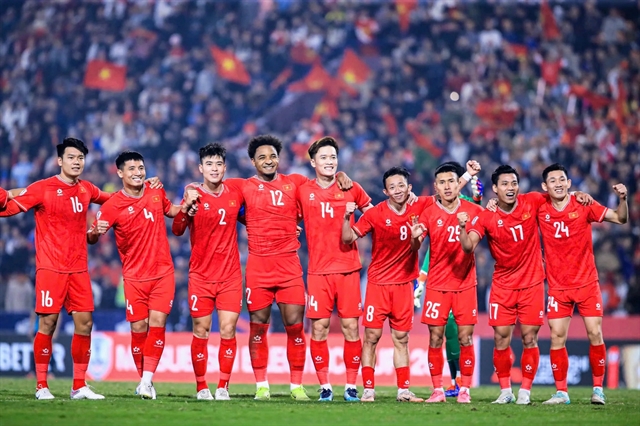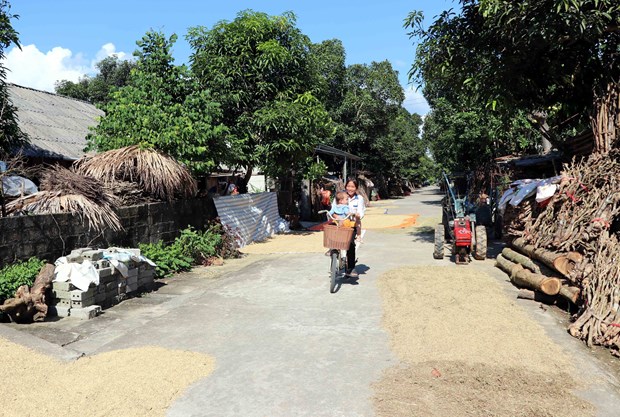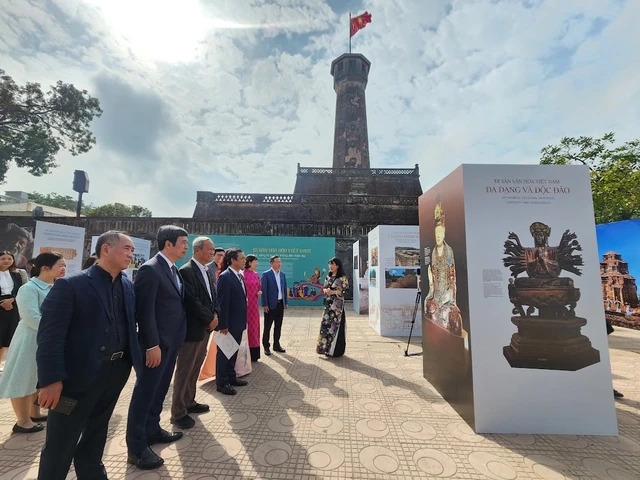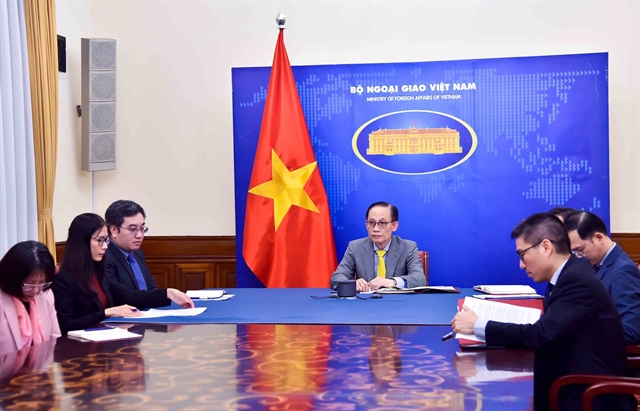 Society
Society


|
| Peaceful life in a resettlement area in Tuyên Quang Province. VNA/VNS Photo |
TUYÊN QUANG - At a resettlement area in Phù Lưu Commune, Hàm Yên District in the northern mountainous province of Tuyên Quang, spacious houses were built close to each other connected by paved streets and alleys.
After 20 years of implementing the resettlement of residents to build the Tuyên Quang Hydropower Plant project, the lives of more than 4,000 households with over 20,000 people living in 125 resettlement sites have changed a lot.
People have settled down and prospered in their new hometowns.
Hồ Văn Chiều, head of one such zone, said that his resettlement had a total of 37 households mainly of Tày ethnic people.
To help people quickly stabilise their lives, the local authorities always promptly informed people about the State's support policies as well as guided them to apply techniques in production and animal husbandry.
The life of people in the resettlement area had improved, as many households had become well-off from growing oranges, lemons, and doing service businesses.
Tày Văn Tương said that in the past, in the old village, his family's life was very difficult, as they only worked in the forest.
After being resettled, people were provided with land by the State to build houses and land for cultivation and livestock, and were guided by agricultural extension officers in production techniques.
The State invested in building rural roads and electricity systems at resettlement sites, making it very convenient for people to travel and transport goods.
From the compensation provided by the State for the Tuyên Quang Hydropower Plant project, Tương's family invested in growing oranges and opening a grocery store.
Every year, his family earned nearly VNĐ200 million in profit from a 4ha area of oranges and the grocery store.
“We wish to continue to be supported by the State with loans for production development with long-term and low-interest loans, so that households are able to expand production and improve incomes,” said Tương.
The resettlement areas feature roads, cultural houses and schools. Currently, 100 per cent of households use electricity from the national grid, and 99 per cent of households use hygienic water.
All school-age children go to school and people have better access to medical services when they are sick.
The Tuyên Quang Hydro Electricity project was approved by the Prime Minister in April 2002, started construction in 2003 and was put into operation in 2008.
From 2003-2006, about 4,000 households and over 20,000 people were moved to 125 resettlement sites in the districts of Lâm Bình, Na Hang, Chiêm Hóa, Hàm Yên, Yên Sơn, and the city of Tuyên Quang.
Nguyễn Thị Định, former director of the Relocation Department for the resettlement project of Tuyên Quang Hydropower Plant in the 2002-2003 period, said that in the early days of relocation, it was difficult to convince people to accept leaving the land they were attached to for new land.
Hundreds of Tuyên Quang Province’s officials with experience and knowledge about local customs were sent to communes and villages to mobilise and guide people to relocate.
The resettled residents hope that the state will continue to invest in some infrastructure projects under construction. VNS




